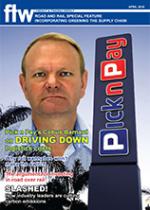Environmentally responsible
shipping lines are not only
improving their ‘green
credentials’ through slow steaming
and the introduction of more
fuel-efficient tonnage, they’re also
choosing greener and cleaner methods
for the disposal of vessels.
A recent example is Safmarine’s
conscious decision not to sell the
24-year-old Safmarine Cotonou
when she reached the end of her
service, but instead to opt for the
vessel’s ‘green recycling’ at the ISO
14001-accredited Changjiang Shipbreaking
Yard in Jiangyin, China so
that a significant portion of the vessel
could be reused.
Watching a ship being ‘green’
recycled is much like watching a
ship being built – only in reverse –
for the same care and attention to
detail which would accompany the
construction of a vessel is applied to
its deconstruction, says Filip Geerts,
Safmarine’s
Antwerp-based health, safety and
environment manager.
“Green or clean recycling of
ships is a trend which is definitely
gaining favour as ship owners show
increased responsibility towards the
environment and the cost gap between
‘clean’ and ‘traditional’ recycling
continues to narrow,” explains Geerts.
He says ship owners – initially
opposed to the idea because of the
perceived, significantly higher cost
– are now realising the value, both
economically and environmentally,
of dismantling and disposing of the
vessel in a ‘green way’.
“Green recycling of ships needn’t
be cost prohibitive. As Safmarine we
were kept informed, at all times, of
the costs associated with the recycling
of the vessel and there were no hidden
costs or surprises – a refreshing
change from using the traditional
beaching method where shipbreakers
often ‘reopen’ negotiations after the
vessel has been grounded and can no
longer be moved.”
Geerts explains several steps were
involved in clean recycling of the
Safmarine Cotonou, a process which
took three months from start to finish.
“After the crew disembarked, the
vessel underwent a pre-inspection
to obtain her Green Passport. This
involved establishing an inventory of
all materials, operationally generated
wastes and stores on board.
“Several ‘surveys’ were then
conducted with a focus on identifying
any ‘toxic’ materials. Every loose
item was collected and disposed
of in an environmentally sensitive
manner. Safe access was created after
fumigation of the vessel to ensure
sufficient light and ventilation holes
and only when all items were safely
removed and the vessel pre-cleaned,
was it time to cut the steel structure.”
‘green’ recycling of cotonou a first for Safmarine
16 Apr 2010 - by Staff reporter
0 Comments
Road And Rail 2010

16 Apr 2010
16 Apr 2010
16 Apr 2010
16 Apr 2010
16 Apr 2010
16 Apr 2010
16 Apr 2010
Border Beat
Poll
Featured Jobs
New
New
New
